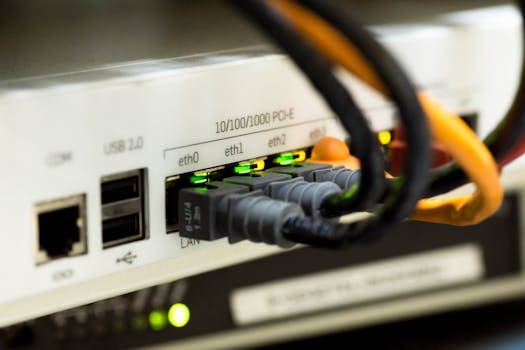
The Role of IoT in Mobile Network Evolution
The Internet of Things (IoT) is revolutionizing the way mobile networks operate, with its impact being felt across various aspects of network infrastructure and management. As the number of connected devices continues to grow, mobile networks are evolving to accommodate the increasing demand for data and connectivity. In this article, we will explore the role of IoT in mobile network evolution and how it is shaping the future of telecommunications.
IoT devices are connected to the internet and can communicate with each other, generating vast amounts of data that need to be processed and analyzed. This has led to an increase in data traffic, which in turn has driven the need for faster and more reliable mobile networks. The advent of 5G technology has been a significant factor in addressing this need, providing faster data speeds, lower latency, and greater connectivity. IoT devices are taking advantage of 5G networks to transmit and receive data in real-time, enabling applications such as smart cities, industrial automation, and remote healthcare monitoring.
Impact of IoT on Mobile Network Infrastructure
The proliferation of IoT devices has significant implications for mobile network infrastructure. As the number of connected devices increases, mobile networks need to be able to handle the increased traffic and provide reliable connectivity. This has led to investments in network upgrades, including the deployment of small cells, macro cells, and other network infrastructure. Additionally, mobile network operators are adopting cloud-based technologies to manage the vast amounts of data generated by IoT devices and to provide scalable and flexible network services.
The use of IoT devices also requires mobile networks to be more secure, as the increased connectivity provides more opportunities for cyber threats. Mobile network operators are therefore investing in security measures such as encryption, firewalls, and intrusion detection systems to protect IoT devices and the data they transmit. Furthermore, the use of IoT devices requires mobile networks to be more intelligent, with the ability to analyze data and make decisions in real-time. This has led to the development of advanced analytics and artificial intelligence (AI) technologies that can process and analyze the vast amounts of data generated by IoT devices.
Future of Mobile Networks with IoT
The future of mobile networks with IoT is exciting and rapidly evolving. As 5G technology continues to roll out, we can expect to see even more innovative applications of IoT devices. For example, the use of IoT devices in smart cities will continue to grow, with applications such as intelligent transportation systems, smart energy management, and public safety. Additionally, the use of IoT devices in industrial automation will continue to increase, with applications such as predictive maintenance, quality control, and supply chain management.
The development of 6G technology is also on the horizon, which promises to provide even faster data speeds, lower latency, and greater connectivity. This will enable even more innovative applications of IoT devices, such as augmented and virtual reality, and the use of IoT devices in critical infrastructure such as healthcare and finance. In conclusion, the role of IoT in mobile network evolution is significant, and its impact will continue to be felt across various aspects of network infrastructure and management.
Conclusion
In conclusion, the Internet of Things (IoT) is playing a significant role in the evolution of mobile networks. As the number of connected devices continues to grow, mobile networks are evolving to accommodate the increasing demand for data and connectivity. The impact of IoT on mobile network infrastructure is significant, with investments in network upgrades, security measures, and advanced analytics and AI technologies. The future of mobile networks with IoT is exciting and rapidly evolving, with innovative applications such as smart cities, industrial automation, and critical infrastructure. As 5G technology continues to roll out and 6G technology develops, we can expect to see even more innovative applications of IoT devices and a continued transformation of the telecommunications industry.



